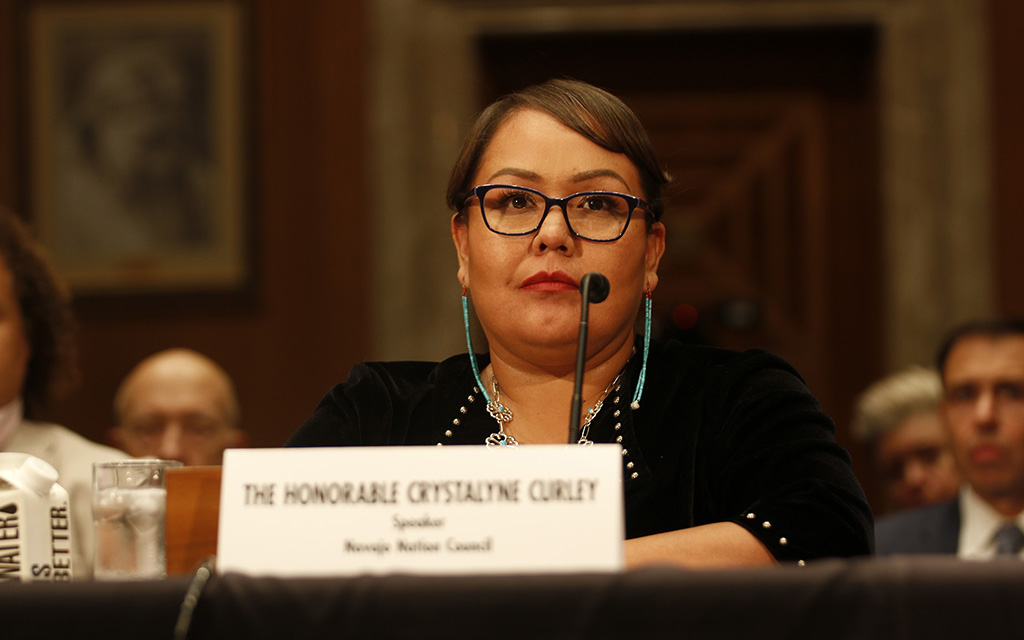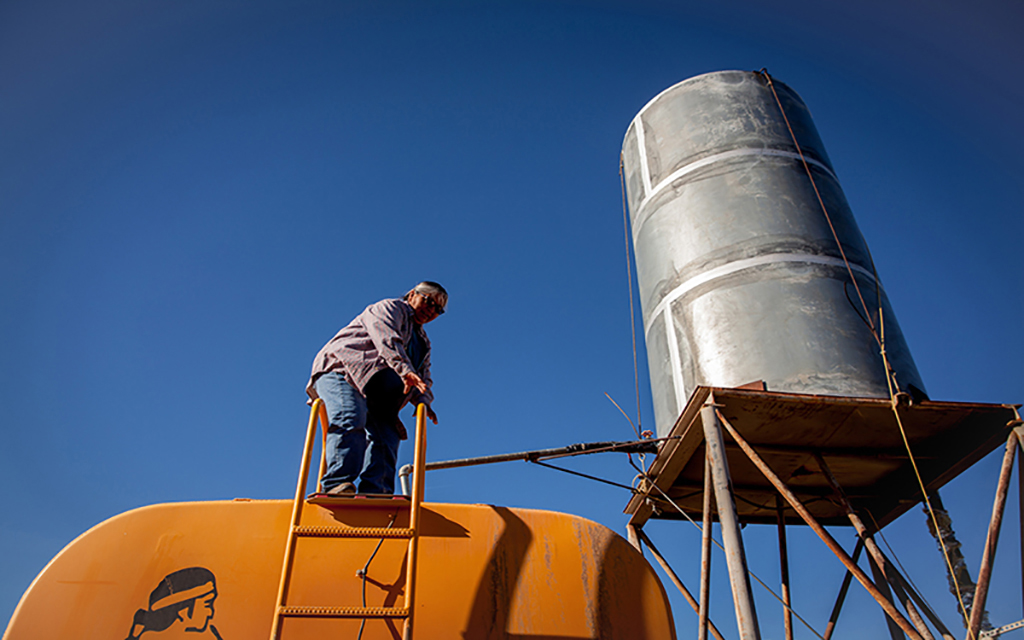WASHINGTON – Crystalyne Curley told a Senate panel Wednesday that the Navajo Nation Council is 100 years old this year – and that the tribe’s fight for water access has been going on for at least that long.
Curley, the speaker of the Navajo Council, made the comments at a Senate Indian Affairs Committee hearing on the government’s trust obligations to ensure water access for tribes. Most of the senators and witnesses at the hearing agreed that there is a legal obligation, but Curley said it goes beyond that.
“I grew up without running water, and so did many of my relatives,” Curley said. “We used to live in a small area and community. So this was at the forefront for most.”
The hearing came just months after the Supreme Court’s June ruling in Arizona v. Navajo Nation, in which the court ruled 5-4 that it could not force the government to take “affirmative steps” to secure water for the Navajo Nation beyond those rights laid out in the original 1868 treaty with the tribe.
Justice Brett Kavanaugh wrote for the majority that it is not in the court’s power to amend the treaty, but rather that it is the responsibility of the president and Congress.
Heather Tanana told senators at Wednesday’s hearing – titled “Water as Trust Resource: Examining Access in Tribal Communities” – that not only does she disagree with the court’s decision, but she thinks the justices misunderstood the question.
Tanana, testifying for the Universal Access to Clean Water for Tribal Communities Project, said the Navajo were not asking for an expansion of their rights.
“The Navajo Nation was just asking for help in assessing where our water is,” said Tanana, a member of the Navajo Nation. “What are our needs? What is a plan?
“There’s a lot of talk about building pipes and infrastructure in that case, which I think was kind of a distracter,” she said. “This (case) was just for help in understanding what asset the government has been holding in trust in them. And if it’s been misused, let’s get a plan to fix it.”
Plans to fix tribal water issues have received a boost in recent years, with billions of federal dollars dedicated to tribal projects.
The $1.2 trillion Bipartisan Infrastructure Law of 2021 included $13 billion for tribes, of which $4.4 billion was dedicated specifically for water and sanitation infrastructure, according to White House documents.
According to the Bureau of Indian Affairs, the American Rescue Plan includes $1.75 billion for tribes in 2021, $20 million of which was allocated for “potable water delivery.” Additionally, the administration claims that $720 million for Native communities was included in the Inflation Reduction Act from last year.
There is no shortage of need for that funding.
Tanana testified that while Black and Hispanic households are twice as likely to lack indoor plumbing as white households, the rate for Indigenous households can be 19 times higher. At a recent House hearing, witnesses cited an Indian Health Service report that said 22% of Native households lacked adequate sanitation.
“Universal work, and that of others has led to an increasing acknowledgement of these challenges and it’s garnered much public sympathy, but sympathy alone cannot close the water gap experienced in Indian country,” Tanana said.
While they pointed to the billions in federal funding that have been approved in recent years to improve tribal access to clean water and sanitation, many senators also said lawmakers need to do more.
“If Congress doesn’t act, then these issues will play out in courts where no one is a winner, except for lawyers, and everybody is harmed,” said Sen. Steve Daines, R-Mont.
Curley said a lack of access to water also impedes tribes’ economic development, agriculture, tourism and more. But that, at its heart, it remains a human rights issue. One she said advocates will keep fighting for.
“Looking forward, we just have to continue to stay hopeful and just keep trying to work with different parties to get this human right,” Curley said.




